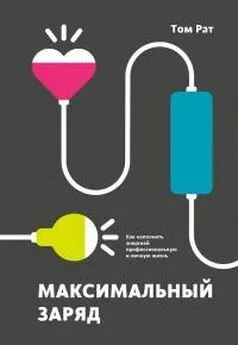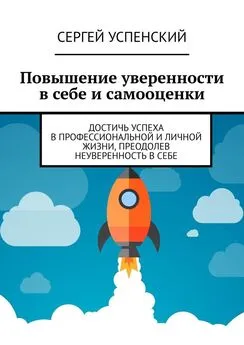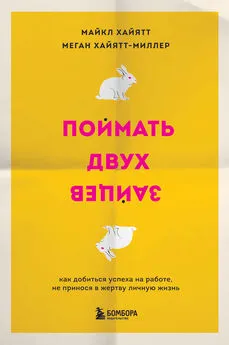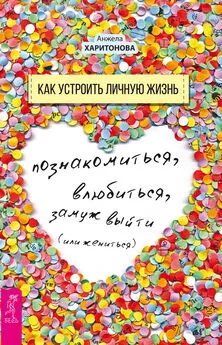Том Рат - Максимальный заряд. Как наполнить энергией профессиональную и личную жизнь
- Название:Максимальный заряд. Как наполнить энергией профессиональную и личную жизнь
- Автор:
- Жанр:
- Издательство:Манн, Иванов и Фербер
- Год:2019
- ISBN:978-5-00117-854-5
- Рейтинг:
- Избранное:Добавить в избранное
-
Отзывы:
-
Ваша оценка:
Том Рат - Максимальный заряд. Как наполнить энергией профессиональную и личную жизнь краткое содержание
На русском языке публикуется впервые.
Максимальный заряд. Как наполнить энергией профессиональную и личную жизнь - читать онлайн бесплатно ознакомительный отрывок
Интервал:
Закладка:
Rath, T. (2007). StrengthsFinder 2.0. New York: Gallup.
Глава 11
Rudd, M., Aaker, J., & Norton, M. I. (2014). Leave them smiling: How small acts create more happiness than large acts. Unpublished manuscript, Graduate School of Education, Stanford University.
The behaviour of successful negotiators. Huthwaite. Retrieved from system.netsuite.com/core/media/media.nl?id=9041&c=1035604&h=47e-32ba37e2a3295bec0&_xt=.pdf.
Tamir, T. I. & Mitchell, J. P. (2012). Disclosing information about the self is intrinsically rewarding. Proceedings of the National Academy of Sciences, 109, 8038–8043. doi:10.1073/pnas.1202129109.
Hotz, R. L. (2012, May 7). Science reveals why we brag so much. Wall Street Journal. Retrieved from online.wsj.com/articles/SB10001424052702304451104577390392329291890.
Anwar, Y. (2011, September 28). Easily embarrassed? Study finds people will trust you more. [Press release]. Retrieved from newscenter.berkeley.edu/2011/09/28/easily-embarrassed.
Feinberg, M., Willer, R., & Keltner, D. (2012). Flustered and faithful. Journal of Personality and Social Psychology, 102, 81–97. doi:10.1037/a0025403.
Ekman, P. (2007). Emotions revealed: Recognizing faces and feelings to improve communication and emotional life (2nd ed.). New York: Owl Books.
University of Texas-Austin. (2010, October 4). What mimicking one’s language style may mean about the relationship. [Press release]. Retrieved from www.utexas.edu/news/2010/10/04/language_relationships.
Ireland, M. E. & Pennebaker, J. W. (2010). Language style matching in writing: synchrony in essays, correspondence, and poetry. Journal of Personality and Social Psychology, 99, 549–571. doi:10.1037/a0020386.
Association for Psychological Science. (2010, December 15). A positive mood allows your human brain to think more creatively. Retrieved from www.psychologicalscience.org/index.php/news/releases/a-positive-mood-allows-your-brain-to-think-more-creatively.html.
Nadler, R. T., Rabi, R., & Minda, J. P. (2010). Better mood and better performance: Learning rule described categories is enhanced by positive mood. Psychological Science, 21, 1770–1776. doi:10.1177/0956797610387441.
Friedman, R. (2014, December 2). You need a work best friend. New York Times Magazine. Retrieved from http://nymag.com/scienceofus/2014/11/you-need-a-work-best-friend.html.
Rath. T. (2006). Vital friends: The people you can’t afford to live without. New York: Gallup Press.
Sias, P. M. & Cahill, D. J. (1998). From coworkers to friends: The development of peer friendships in the workplace. Western Journal of Communication, 62, 273–299. doi:10.1080/10570319809374611.
Глава 12
Griswold, A. (2014, February 25). This one simple management change saved Bank of America $15 million. Business Insider. Retrieved from www.businessinsider.com/bank-of-america-call-center-management-2014-2.
Cabrera, B. (2012, December 6). Choose your friends wisely. Cabrera Insights. Retrieved from organizationalpositivity.com/?p=1893.
Holt-Lunstad, J., Smith, T. B., & Layton, J. B. (2010). Social relationships and mortality risk: A meta-analytic review. PLoS Med 7(7): e1000316. doi:10.1371/journal.pmed.1000316.
Sheldon, K. M. & Lyubomirsky, S. (2012). The challenge of staying happier: Testing the hedonic adaptation prevention model. Personality and Social Psychology Bulletin, 38, 670–680. doi:10.1177/0146167212436400.
Misra, S., Cheng, L., Genevie, J., & Yuan, M. (2014). The iPhone effect: The quality of in-person social interactions in the presence of mobile devices. Environment and Behavior. doi:10.1177/0013916514539755.
Thornton, B., Faires, A., Robbins, M., & Rollins, E. (2014). The mere presence of a cell phone may be distracting. Social Psychology, 45, 479–488. doi:10.1027/1864-9335/a000216.
Huseman, R. C., Lahiff, J. M., & Penrose, J. M. (1988). Business communication strategies and skills (3rd ed.). Chicago: Dryden.
Landrum, N. (2002). How to stay married and love it: Solving the puzzle of a soulmate marriage. Murrieta, CA: River Publi-shing.
Глава 13
Blackman, A. (n.d.). Can money buy you happiness? Wall Street Journal. Retrieved from online.wsj.com/articles/can-money-buy-happiness-heres-what-science-has-to-say-1415569538.
Pchelin, P., & Howell, R. T. (2014). The hidden cost of value-seeking: People do not accurately forecast the economic benefits of experiential purchases. Journal of Positive Psychology, 9, 322–334. doi:10.1080/17439760.2014.898316.
Martin, D. (Producer) (2015). Fully Charged [DVD]. United States: Missionday.
Kumar, A., Killingsworth, M. A. & Gilovich, T. (2014). Waiting for merlot: Anticipatory consumption of experiential and material purchases. Psychological Science, 25, 1924–1931. doi:10.1177/0956797614546556.
Thompson, D. (2014, Februrary 25). America’s weird, enduring love affair with cars and houses. The Atlantic. Retrieved from www.theatlantic.com/business/archive/2014/02/americas-weird-enduring-love-affair-with-cars-and-houses/284049.
Norton, M. (2011, October). How to buy happiness. [Video file]. Retrieved from t.co/sDlqruee.
Zane, J. P. (2014). How to gladden a wealthy mind. New York Times. Retrieved from www.nytimes.com/2014/10/23/your-money/how-to-gladden-a-wealthy-mind-.html?_r=0.
Guevarra, D. A. & Howell, R. T. (2014). To have in order to do: Exploring the effects of consuming experiential products on well-being. Journal of Consumer Psychology. doi:10.1016/j.jcps.2014.06.006.
Mitchell, T. R., Thompson, L., Peterson, E., & Cronk, R. (1997). Temporal adjustments in the evaluation of events: The “rosy view.” Journal of Experimental Social Psychology, 33, 421–448. doi:10.1006/jesp.1997.1333.
Parker-Pope, T. (2010, February 18). How vacations affect your happiness. New York Times. Retrieved from well.blogs.nytimes.com/2010/02/18/how-vacations-affect-your-happiness/?_r=0.
Глава 14
Jaremka, L. M., Gabriel, S., & Carvallo, M. (2011). What makes us feel the best also makes us feel the worst: The emotional impact of independent and interdependent experiences. Self and Identity, 10, 44–63. doi:10.1080/15298860903513881.
Donovan, P. (2010, August 26). Our best and worst moments occur within social relationships, research shows. [Press release] Retrieved from www.buffalo.edu/news/releases/2010/08/11683.html.
Friends with cognitive benefits: Mental function improves after certain kinds of socializing. (2010, October 28). Science Daily. Retrieved from www.sciencedaily.com/releases/2010/10/101028113817.htm.
Ybarra, O., Winkielman, P., Yeh, I., Burnstein, E., & Kavanagh. L. (2011). Friends (and sometimes enemies) with cognitive benefits: What types of social interactions boost executive functioning? Social Psychological and Personality Science, 2, 253–261. doi:10.1177/1948550610386808.
Zero-sum game. Retrieved December 28, 2014 from http://en.wikipedia.org/wiki/Zero-sum_game.
Anik, L., Aknin, L. B., Norton, M. I., Dunn, E. W., & Quoidbach, J. (2013). Prosocial bonuses increase employee satisfaction and team performance. PLoS ONE, 8(9): e75509. doi:10.1371/journal.pone.0075509.
Глава 15
Judge, T. A. & Hurst, C. (2008). How the rich (and happy) get richer (and happier): Relationship of core self-evaluations to trajectories in attaining work success. Journal of Applied Psychology, 93, 849–863. doi:10.1037/0021-9010.93.4.849.
Rath. T. (2004). How full is your bucket? New York: Gallup Press.
Rath, T., Reckmeyer, M., & Manning, M. J. (2009). How full is your bucket? For kids. New York: Gallup Press.
Fredrickson, B. L. (2009). Positivity: Top-notch research reveals the 3-to-1 ratio that will change your life. New York: Three Rivers Press.
Rudd, M., Aaker, J., & Norton, M. I. (2014). Getting the most out of giving: Concretely framing a prosocial goal maximizes happiness. Journal of Experimental Social Psychology, 54, 11–24. doi:10.1016/j.jesp.2014.04.002.
Глава 16
Rath, T. (2013). Eat Move Sleep. Arlington: Missionday.
Katrandjian, O. (2012, January 30). Study finds 55 percent nurses are overweight. ABC News. Retrieved from abcnews.go.com/Health/studyfinds-55-percent-nurses-overweight-obese/story?id=15472375.
Griffiths, P., Dall’Ora, C., Simon, M., Ball, J., … Aiken, L. H. (2014). Nurses’ shift length and overtime working in 12 European countries: The association with perceived quality of care and patient safety. Medical Care, 52, 975–981. doi:10.1097/MLR.0000000000000233.
Опрос 10 564 респондентов, разработанный Missionday и проведенный при помощи Google Consumer Surveys в августе–декабре 2014 года. Подробнее о методологии Google см.: www.google.com/insights/consumer-surveys/static/consumer_surveys_whitepaper_v2.pdf.
King, A. C., Castro, C. M., Buman, M. P., Helker, E. B., Urizar, G. G., & Ahn, D. K. (2013). Behavioral impacts of sequentially versus simultaneously delivered dietary plus physical activity interventions: The CALM trial. Annals of Behavioral Medicine, 46(2), 157–168. doi:10.1007/s12160-013-9501-y.
Глава 17
Mozaffarian, D., Hao, T., Rimm, E. B., Willett, W. C., & Hu, F. B. (2011). Changes in diet and lifestyle and long-term weight gain in women and men. New England Journal of Medicine, 364, 2392–2404. doi:10.1056/NEJMoa1014296.
Brody, J. E. (2011, July 18). Still counting calories? Your weight-loss plan may be outdated. New York Times. Retrieved from www.nytimes.com/2011/07/19/health/19brody.html?pagewanted=all&_r=1&.
Dreifus, C. (2012, May 14). A mathematical challenge to obesity. New York Times. Retrieved from www.nytimes.com/2012/05/15/science/a-mathematical-challenge-to-obesity.html.
Rath, T., & Harter, J. K. (2010). Wellbeing: The five essential elements. New York: Gallup Press.
Larsen, T. M., Dalskov, S. M., van Baak, M., Jebb, S. A., Papadaki, A., Pfeiffer, F., … Astrup, A. (2010). Diets with high or low protein content and glycemic index for weight-loss maintenance. New England Journal of Medicine, 363, 2102–2113. doi:10.1056/NEJMoa1007137.
Hoertel, H. A., Will, M. J., & Leidy, H. J. (2014). A randomized crossover, pilot study examining the effects of a normal protein vs. high protein breakfast on food cravings and reward signals in overweight/obese “breakfast skipping”, late-adolescent girls. Nutrition Journal, 13, 80. doi:10.1186/1475-2891-13-80.
Smith, K. J., Gall, S. L., McNaughton, S. A., Blizzard, L., Dwyer, T., & Venn, J. (2010). Skipping breakfast: longitudinal associations with cardiometabolic risk factors in the Childhood Determinants of Adult Health Study. American Journal of Clinical Nutrition, 92, 1316–1325. doi:10.3945/ajcn.2010.30101.
Kiefer, I. (2007). Brain food. Scientific American Mind, 18, 58–63. doi:10.1038/scientificamericanmind1007-58.
Glycemic index foods at breakfast can control blood sugar throughout the day. (2012, March 30). Institute of Food Technologists. [Press Release]. Retrieved from www.ift.org/newsroom/news-releases/2012/march/30/glycemic-index.aspx.
Leidy, H. J., Ortinau, L. C., Douglas, S. M., & Hoertel, H. A. (2013). Beneficial effects of a higher-protein breakfast on the appetitive, hormonal, and neural signals controlling energy intake regulation in overweight/obese, “breakfast-skipping,” late-adolescent girls. American Journal of Clinical Nutrition, 97, 677–688. doi:10.3945/ajcn.112.053116.
Taubes, G. (2011, April 13). Is sugar toxic? New York Times. Retrieved from www.nytimes.com/2011/04/17/magazine/mag-17Sugar-t.html.
Читать дальшеИнтервал:
Закладка:










